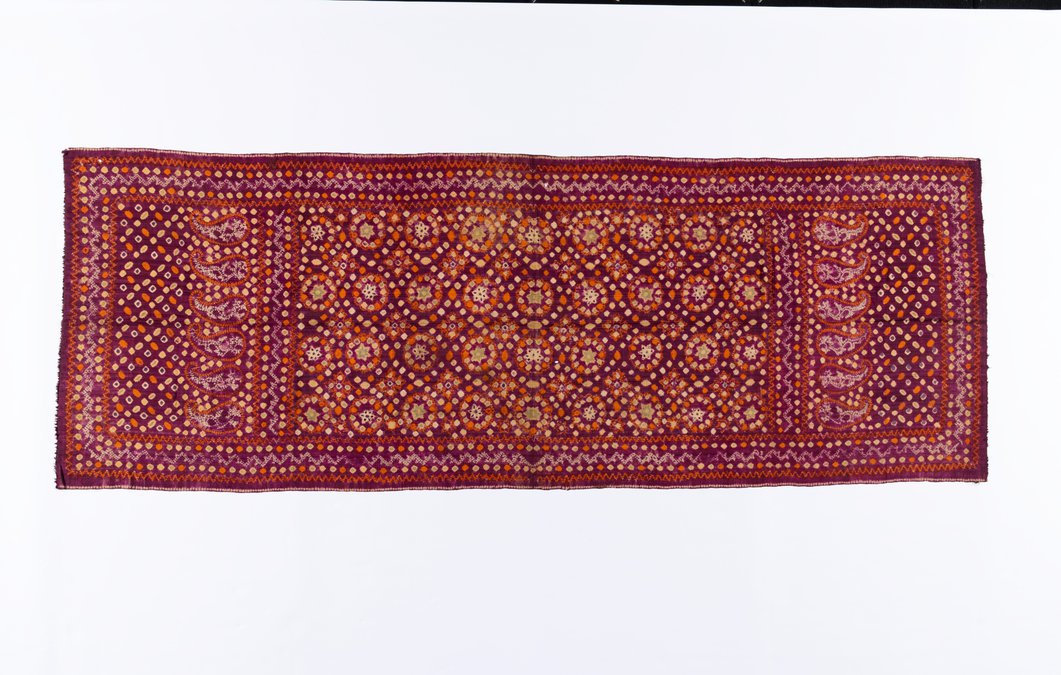Colours of the rainbow: Exuberant Balinese fashion E097481
- World Cultures
- Indonesian Collection
On this page...
The dynamic nature of Balinese culture is very well demonstrated in the island’s fashion trends. Dressing up for the performance of ritual is taken seriously and dress is subject to different caste, regional and even district variations. The bold expressions of colour for which Balinese art, ritual and performance is celebrated are equally evident in ceremonial wardrobes. A particularly vivid display of colour in the form of a chest wrapper for women is named from the Indonesian word for rainbow, ‘pelangi’, describing a technique achieved with a tie-dye and stitch-dye method.
These exuberant designs are achieved by gathering up sections of cloth and binding them tightly so that when the silk fabric is submerged into a vat of dye the ties and folds resist the dye. After dyeing the ties are removed to reveal the patterns. This technique is often combined with another resist method using stitched thread ‘tritik’, in which the designs are sewn into the fabric, and after dyeing the threads are cut off to reveal the patterns. This long silk cloth features a dynamic arrangement of zig zags and circles combining the colours green, red, purple and orange.
Similar methods are practiced in other parts of Indonesia including Sulawesi, Java, Sumbawa and Sumatra. The varieties made around Palembang in South Sumatra are highly regarded for their artistry and were also popular as attire in Bali. This example textile [E097450], purchased in Bali, features a repeating pattern of flowers, star and diamond shapes in dramatic purple and orange hues with rows of paisley motifs in the end fields suggesting Indian influence. Both these cloths date to the early twentieth century when upper-body wear for women consisted of a long cloth wrapped around the chest and stomach. Today a sarong is still wrapped around the lower body and fastened with a cloth around the waist, but stitched blouses (kebaya) have largely replaced the long chest cloths.



